
Warning
This documentation is for an old version of IPython. You can find docs for newer versions here.
IPython 0.13 contains several major new features, as well as a large amount of bug and regression fixes. The previous version (0.12) was released on December 19 2011, and in this development cycle we had:
The amount of work included in this release is so large, that we can only cover here the main highlights; please see our detailed release statistics for links to every issue and pull request closed on GitHub as well as a full list of individual contributors.
The IPython Notebook, which has proven since its release to be wildly popular, has seen a massive amount of work in this release cycle, leading to a significantly improved user experience as well as many new features.
The first user-visible change is a reorganization of the user interface; the left panel has been removed and was replaced by a real menu system and a toolbar with icons. Both the toolbar and the header above the menu can be collapsed to leave an unobstructed working area:
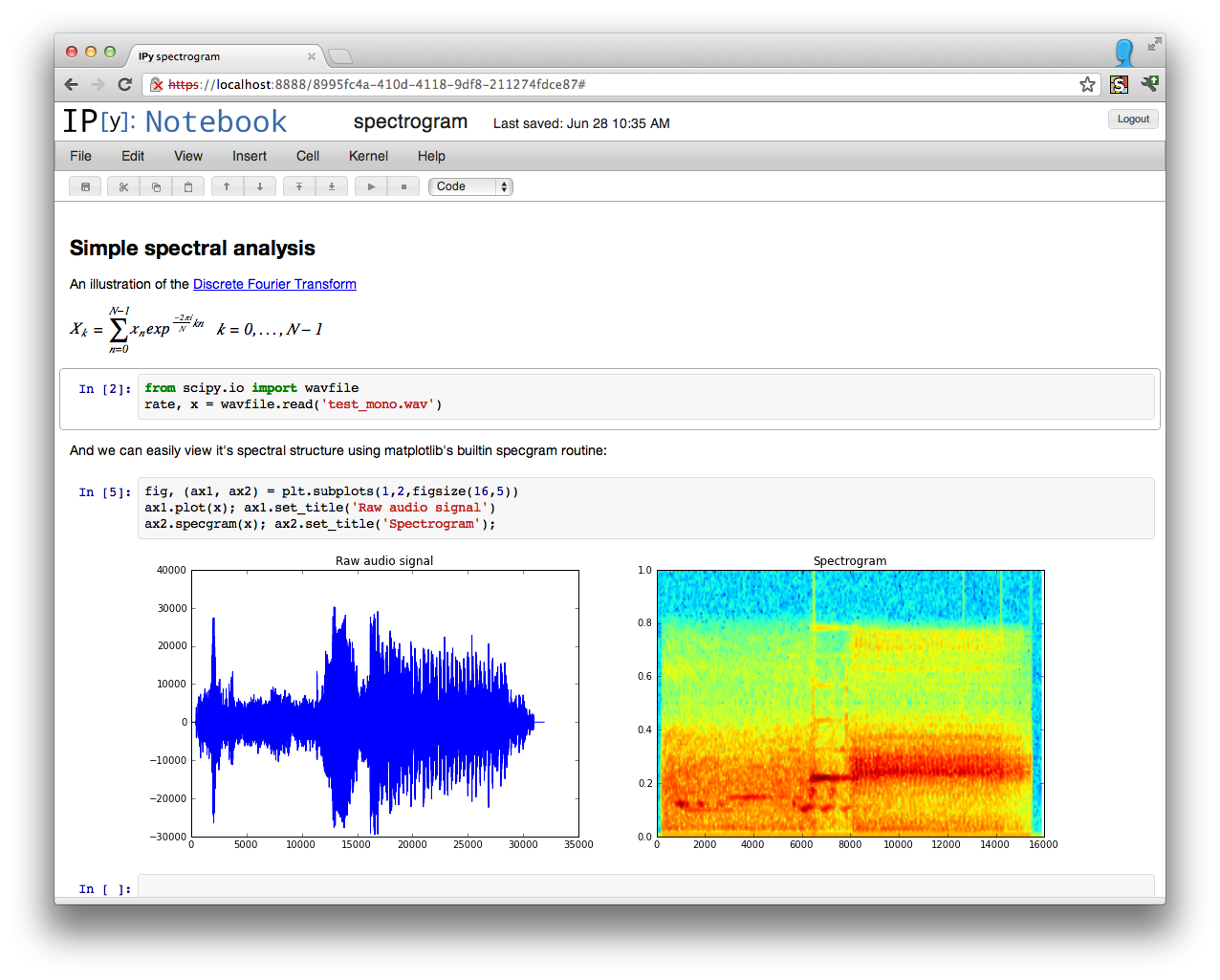
The notebook handles very long outputs much better than before (this was a serious usability issue when running processes that generated massive amounts of output). Now, in the presence of outputs longer than ~100 lines, the notebook will automatically collapse to a scrollable area and the entire left part of this area controls the display: one click in this area will expand the output region completely, and a double-click will hide it completely. This figure shows both the scrolled and hidden modes:
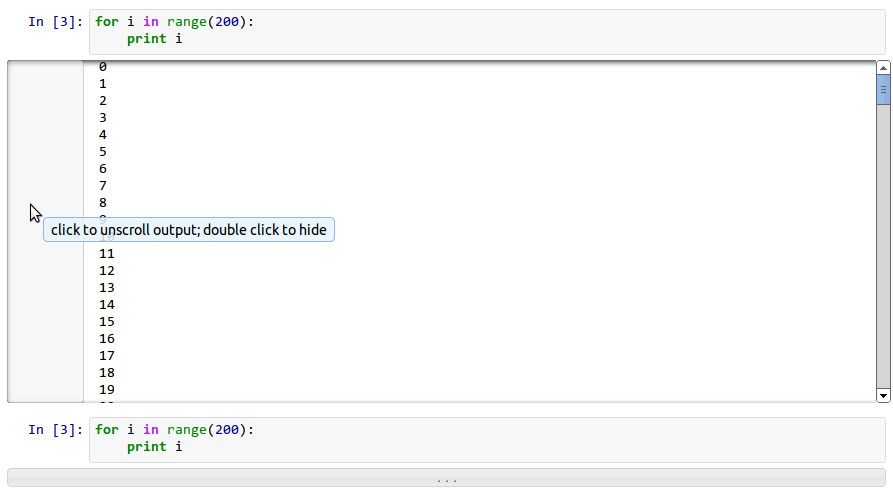
Note
The auto-folding of long outputs is disabled in Firefox due to bugs in its scrolling behavior. See PR #2047 for details.
Uploading notebooks to the dashboard is now easier: in addition to drag and drop (which can be finicky sometimes), you can now click on the upload text and use a regular file dialog box to select notebooks to upload. Furthermore, the notebook dashboard now auto-refreshes its contents and offers buttons to shut down any running kernels (PR #1739):

The notebook dashboard can now also start and stop clusters, thanks to a new tab in the dashboard user interface:
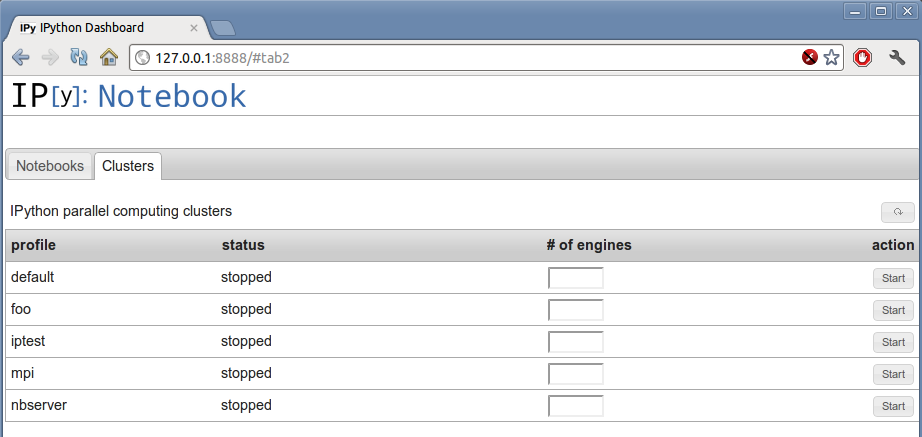
This interface allows, for each profile you have configured, to start and stop a cluster (and optionally override the default number of engines corresponding to that configuration). While this hides all error reporting, once you have a configuration that you know works smoothly, it is a very convenient interface for controlling your parallel resources.
The notebooks saved now use version 3 of our format, which supports heading levels as well as the concept of ‘raw’ text cells that are not rendered as Markdown. These will be useful with converters we are developing, to pass raw markup (say LaTeX). That conversion code is still under heavy development and not quite ready for prime time, but we welcome help on this front so that we can merge it for full production use as soon as possible.
Note
v3 notebooks can not be read by older versions of IPython, but we provide a simple script that you can use in case you need to export a v3 notebook to share with a v2 user.
All the client-side JavaScript has been decoupled to ease reuse of parts of the machinery without having to build a full-blown notebook. This will make it much easier to communicate with an IPython kernel from existing web pages and to integrate single cells into other sites, without loading the full notebook document-like UI. PR #1711.
This refactoring also enables the possibility of writing dynamic javascript widgets that are returned from Python code and that present an interactive view to the user, with callbacks in Javascript executing calls to the Kernel. This will enable many interactive elements to be added by users in notebooks.
An example of this capability has been provided as a proof of concept in examples/widgets that lets you directly communicate with one or more parallel engines, acting as a mini-console for parallel debugging and introspection.
The object tooltips have gained some new functionality. By pressing tab several times, you can expand them to see more of a docstring, keep them visible as you fill in a function’s parameters, or transfer the information to the pager at the bottom of the screen. For the details, look at the example notebook 01_notebook_introduction.ipynb.
These are some other notable small improvements to the notebook, in addition to many bug fixes and minor changes to add polish and robustness throughout:
We have completely refactored the magic system, finally moving the magic objects to standalone, independent objects instead of being the mixin class we’d had since the beginning of IPython (PR #1732). Now, a separate base class is provided in IPython.core.magic.Magics that users can subclass to create their own magics. Decorators are also provided to create magics from simple functions without the need for object orientation. Please see the Magic command system docs for further details.
All builtin magics now exist in a few subclasses that group together related functionality, and the new IPython.core.magics package has been created to organize this into smaller files.
This cleanup was the last major piece of deep refactoring needed from the original 2001 codebase.
We have also introduced a new type of magic function, prefixed with %% instead of %, which operates at the whole-cell level. A cell magic receives two arguments: the line it is called on (like a line magic) and the body of the cell below it.
Cell magics are most natural in the notebook, but they also work in the terminal and qt console, with the usual approach of using a blank line to signal cell termination.
For example, to time the execution of several statements:
%%timeit x = 0 # setup
for i in range(100000):
x += i**2
This is particularly useful to integrate code in another language, and cell magics already exist for shell scripts, Cython, R and Octave. Using %%script /usr/bin/foo, you can run a cell in any interpreter that accepts code via stdin.
Another handy cell magic makes it easy to write short text files: %%file ~/save/to/here.txt.
The following cell magics are now included by default; all those that use special interpreters (Perl, Ruby, bash, etc.) assume you have the requisite interpreter installed:
This is what some of the script-related magics look like in action:
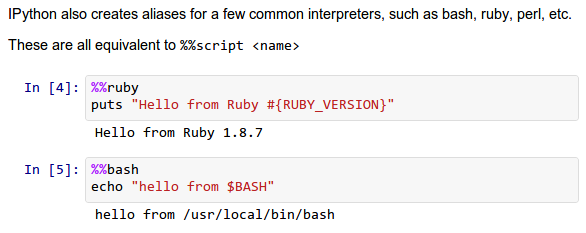
In addition, we have also a number of extensions that provide specialized magics. These typically require additional software to run and must be manually loaded via %load_ext <extension name>, but are extremely useful. The following extensions are provided:
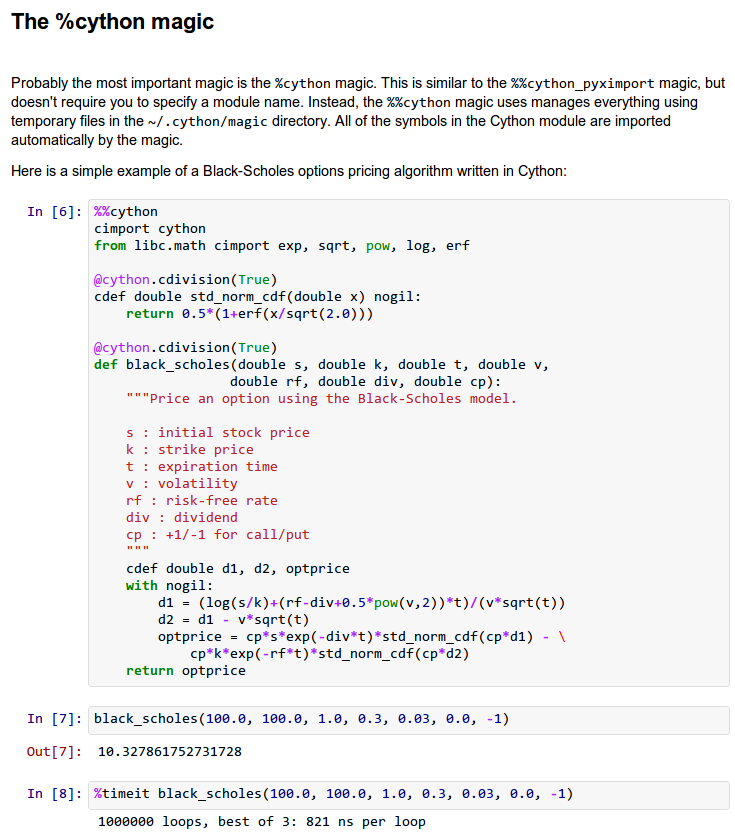
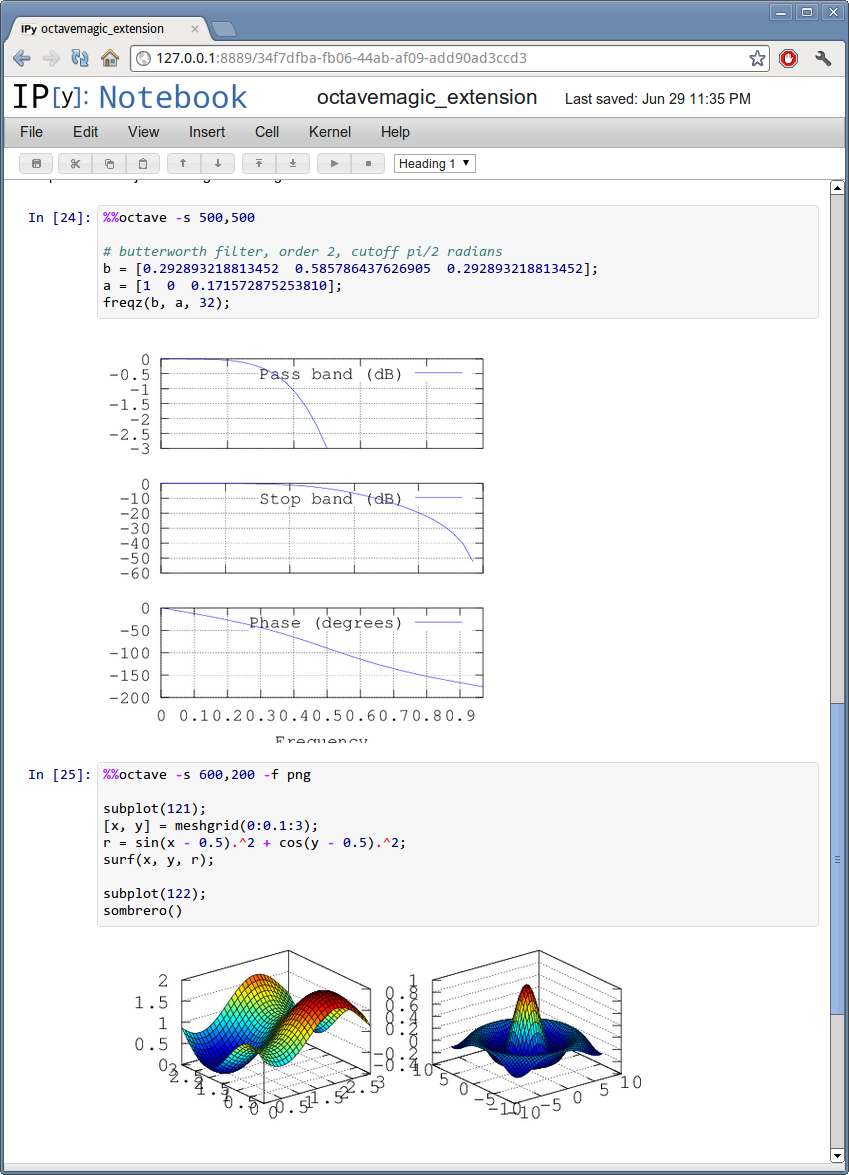
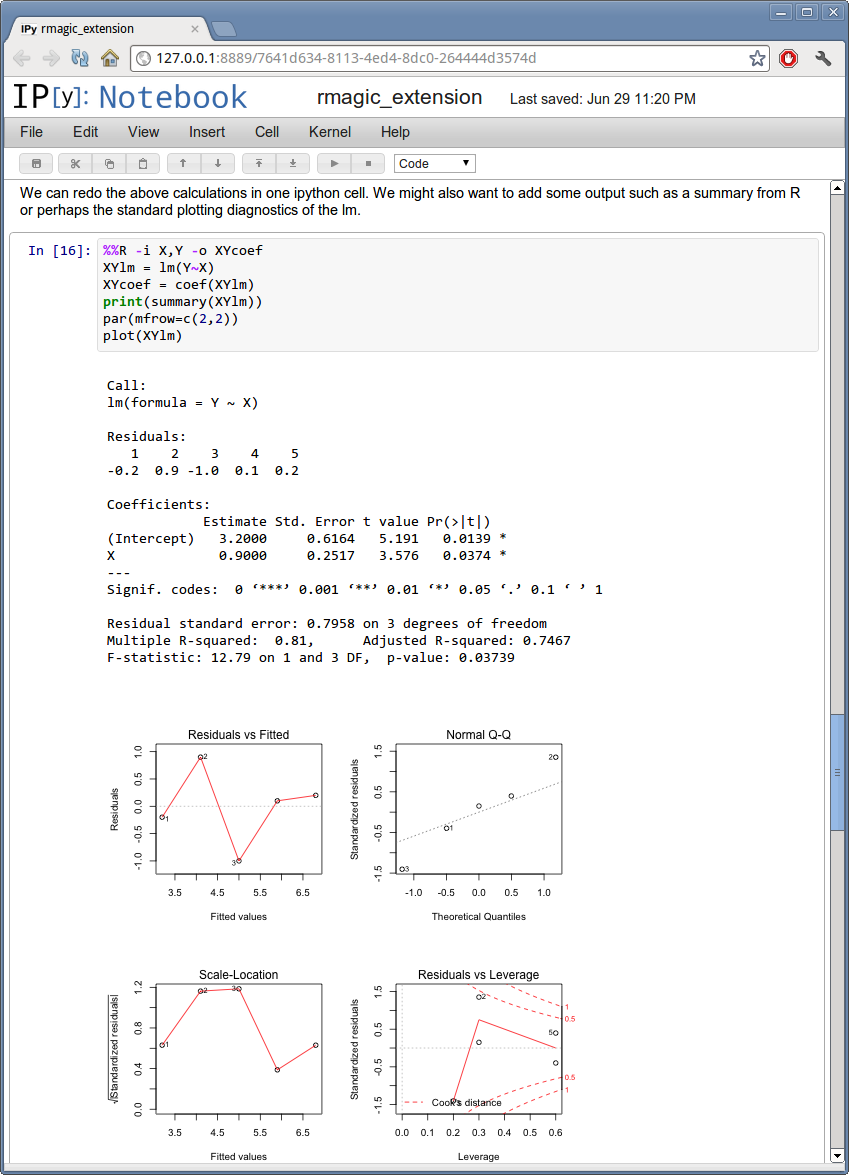
Useful tab-completion based on live inspection of objects is one of the most popular features of IPython. To make this process even more user-friendly, the completers of both the Qt console and the Notebook have been reworked.
The Qt console comes with a new ncurses-like tab completer, activated by default, which lets you cycle through the available completions by pressing tab, or select a completion with the arrow keys (PR #1851).

The new improved Qt console’s ncurses-like completer allows to easily navigate thought long list of completions.
In the notebook, completions are now sourced both from object introspection and analysis of surrounding code, so limited completions can be offered for variables defined in the current cell, or while the kernel is busy (PR #1711).
We have implemented a new configurable flag to control tab completion on modules that provide the __all__ attribute:
IPCompleter.limit_to__all__= Boolean
This instructs the completer to honor __all__ for the completion. Specifically, when completing on object.<tab>, if True: only those names in obj.__all__ will be included. When False [default]: the __all__ attribute is ignored. PR #1529.
The Qt console continues to receive improvements and refinements, despite the fact that it is by now a fairly mature and robust component. Lots of small polish has gone into it, here are a few highlights:
The parallel tools have been improved and fine-tuned on multiple fronts. Now, the creation of an IPython.parallel.Client object automatically activates a line and cell magic function px that sends its code to all the engines. Further magics can be easily created with the Client.activate() method, to conveniently execute code on any subset of engines. PR #1893.
The %%px cell magic can also be given an optional targets argument, as well as a --out argument for storing its output.
A new magic has also been added, %pxconfig, that lets you configure various defaults of the parallel magics. As usual, type %pxconfig? for details.
The exception reporting in parallel contexts has been improved to be easier to read. Now, IPython directly reports the remote exceptions without showing any of the internal execution parts:
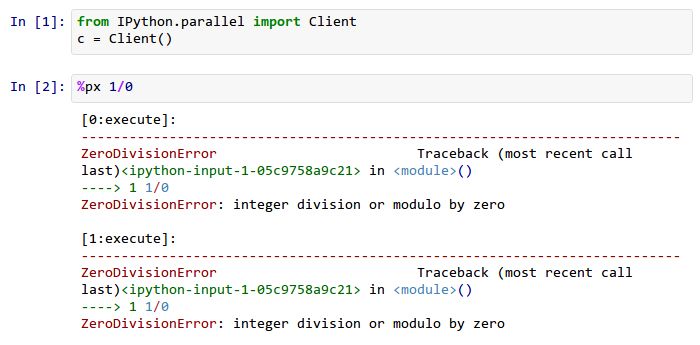
The parallel tools now default to using NoDB as the storage backend for intermediate results. This means that the default usage case will have a significantly reduced memory footprint, though certain advanced features are not available with this backend. For more details, see IPython’s Task Database.
The parallel magics now display all output, so you can do parallel plotting or other actions with complex display. The px magic has now both line and cell modes, and in cell mode finer control has been added about how to collate output from multiple engines. PR #1768.
There have also been incremental improvements to the SSH launchers:
This makes the SSHLauncher usable on machines without shared filesystems.
A number of ‘sugar’ methods/properties were added to AsyncResult that are quite useful (PR #1548) for everday work:
- ar.wall_time = received - submitted
- ar.serial_time = sum of serial computation time
- ar.elapsed = time since submission (wall_time if done)
- ar.progress = (int) number of sub-tasks that have completed
- len(ar) = # of tasks
- ar.wait_interactive(): prints progress
Added Client.spin_thread() / stop_spin_thread() for running spin in a background thread, to keep zmq queue clear. This can be used to ensure that timing information is as accurate as possible (at the cost of having a background thread active).
Set TaskScheduler.hwm default to 1 instead of 0. 1 has more predictable/intuitive behavior, if often slower, and thus a more logical default. Users whose workloads require maximum throughput and are largely homogeneous in time per task can make the optimization themselves, but now the behavior will be less surprising to new users. PR #1294.
This is mostly work ‘under the hood’, but it is actually a major achievement for the project that has deep implications in the long term: at last, we have unified the main object that executes as the user’s interactive shell (which we refer to as the IPython kernel) with the objects that run in all the worker nodes of the parallel computing facilities (the IPython engines). Ever since the first implementation of IPython’s parallel code back in 2006, we had wanted to have these two roles be played by the same machinery, but a number of technical reasons had prevented that from being true.
In this release we have now merged them, and this has a number of important consequences:
It is now possible to connect any of our clients (qtconsole or terminal console) to any individual parallel engine, with the exact behavior of working at a ‘regular’ IPython console/qtconsole. This makes debugging, plotting, etc. in parallel scenarios vastly easier.
Parallel engines can always execute arbitrary ‘IPython code’, that is, code that has magics, shell extensions, etc. In combination with the %%px magics, it is thus extremely natural for example to send to all engines a block of Cython or R code to be executed via the new Cython and R magics. For example, this snippet would send the R block to all active engines in a cluster:
%%px
%%R
... R code goes here
It is possible to embed not only an interactive shell with the IPython.embed() call as always, but now you can also embed a kernel with IPython.embed_kernel(). Embedding an IPython kernel in an application is useful when you want to use IPython.embed() but don’t have a terminal attached on stdin and stdout.
The new IPython.parallel.bind_kernel() allows you to promote Engines to listening Kernels, and connect QtConsoles to an Engine and debug it directly.
In addition, having a single core object through our entire architecture also makes the project conceptually cleaner, easier to maintain and more robust. This took a lot of work to get in place, but we are thrilled to have this major piece of architecture finally where we’d always wanted it to be.
We have begun organizing our API for easier public use, with an eye towards an official IPython 1.0 release which will firmly maintain this API compatible for its entire lifecycle. There is now an IPython.display module that aggregates all display routines, and the IPython.config namespace has all public configuration tools. We will continue improving our public API layout so that users only need to import names one level deeper than the main IPython package to access all public namespaces.
The directory docs/resources in the source distribution contains SVG and PNG versions of our file icons, as well as an Info.plist.example file with instructions to install them on Mac OSX. This is a first draft of our icons, and we encourage contributions from users with graphic talent to improve them in the future:
Add locate entry points; these would be useful for quickly locating IPython directories and profiles from other (non-Python) applications. PR #1762.
Examples:
$> ipython locate
/Users/me/.ipython
$> ipython locate profile foo
/Users/me/.ipython/profile_foo
$> ipython locate profile
/Users/me/.ipython/profile_default
$> ipython locate profile dne
[ProfileLocate] Profile u'dne' not found.
The %save magic now has a -f flag to force overwriting, which makes it much more usable in the notebook where it is not possible to reply to interactive questions from the kernel. PR #1937.
Use dvipng to format sympy.Matrix, enabling display of matrices in the Qt console with the sympy printing extension. PR #1861.
Our messaging protocol now has a reasonable test suite, helping ensure that we don’t accidentally deviate from the spec and possibly break third-party applications that may have been using it. We encourage users to contribute more stringent tests to this part of the test suite. PR #1627.
Use LaTeX to display, on output, various built-in types with the SymPy printing extension. PR #1399.
Add Gtk3 event loop integration and example. PR #1588.
clear_output improvements, which allow things like progress bars and other simple animations to work well in the notebook (PR #1563):
- clear_output() clears the line, even in terminal IPython, the QtConsole and plain Python as well, by printing r to streams.
- clear_output() avoids the flicker in the notebook by adding a delay, and firing immediately upon the next actual display message.
- display_javascript hides its output_area element, so using display to run a bunch of javascript doesn’t result in ever-growing vertical space.
Add simple support for running inside a virtualenv. While this doesn’t supplant proper installation (as users should do), it helps ad-hoc calling of IPython from inside a virtualenv. PR #1388.
In this cycle, we have closed over 740 issues, but a few major ones merit special mention: